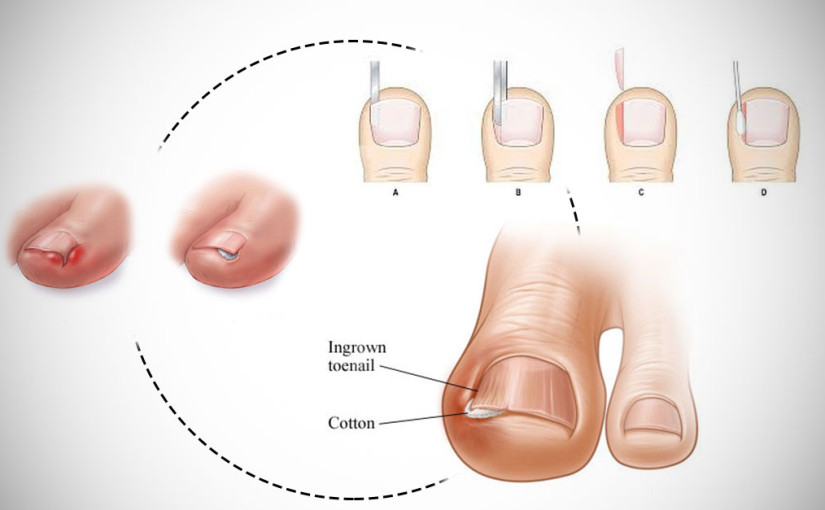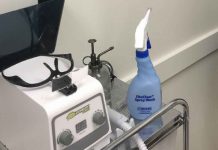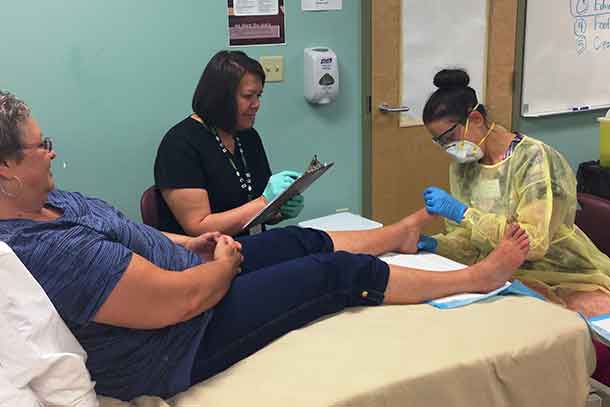THUNDER BAY – LIVING – Do you ever feel like your shoes are tight but only on your big toes? Or only on one toe, on the edge? That is a sign that you may have a ingrown toenail.
Medically the disorder is called “Onychocrypotsis” or “unguis incarnatus”. It can effect either fingers or toes but is seen more in the big toes. It is a condition where the nail grows into the sides of the toes, becoming painful and possibly infected. The nail itself can dig deeper into your skin and start embedding. If it does become embedded or infected then its best to get a referral to a podiatrist.
Factors in causing ingrown toenails:
- Ill-fitting shoes. When they are too tight the pressure on your nail downwards and your skin upwards can cause ingrowns.
- Being on your feet a lot.
- Having naturally high arched (really curved) nails.
- Having naturally bigger lateral folds (the skin that grows around your nails). This can “swallow up/over” the sides of your nails.
- Cutting your toenails wrong.
The types of ingrown nails:
- Adolescent embedding (not just in adolescents age wise) – the nail bed is too narrow for the toenail.
- Picatated – the nail is sharply bending down into the skin.
- Distal embedding – when the nail is cut too short and the surrounding skin takes the opportunity to swell.
- Pincer nails are more common in the elderly, as factors such as diabetes, liver problems, and medication can affect the growth and health of a nail.
3 stages of ingrown nail:
- inflammation, swelling, and pain,
- inflammation, pain, nonhealing wound and oozing, and granulation tissue,
- pus abscess formation and chronic embedding of the lateral nail fold.
Treatment for ingrown nails ranges from corrective filing to surgery.
Once the nail is cut below the free edge, there is a chance of the nail growing into the skin, especially if the corners of the nail have been filed away or if a small spur is left on the edge of the nail. Corrective filing allows the nail to grow and widen so the edges don’t dig into the skin. Filing the nails straight and leaving a free edge.
This can be done at home or getting regular pedicures.
Transforming hard nails back to their original softness and helping to prevent them from growing inwards, Gehwol Med Nail Softener softens hard skin beneath the nail and the nail fold so it can be easily removed without pain. One of the active ingredients, bisabolol, helps prevent redness and irritation.
There is a small brace for the nail to lift it up. Techs trained to use the B/S Brace have reported  incredible success with the care of ingrown nails. Lourdes Castillo, owner of Lourdes Nail Studio in Sarasota, Fla., regularly uses the B/S brace. “I can put it on a client during her pedicure and work around it. The client can feel it pulling the nail out of the skin as early as later that day,” says Castillo. “When the client returns for her pedicure, the brace will still be on, and the nail will have drastically improved.”
incredible success with the care of ingrown nails. Lourdes Castillo, owner of Lourdes Nail Studio in Sarasota, Fla., regularly uses the B/S brace. “I can put it on a client during her pedicure and work around it. The client can feel it pulling the nail out of the skin as early as later that day,” says Castillo. “When the client returns for her pedicure, the brace will still be on, and the nail will have drastically improved.”
Packing is another simple method. A wisp of cotton is inserted between the corner of the nail and the nail fold. This may first be a bit painful but the patients usually report immediate relief as soon as it has been done. The cotton may be soaked with an antiseptic or disinfectant. The procedure is repeated on a daily basis, each time trying to use a bit more cotton. When complete painlessness is achieved and the nail margin is no longer digging in, the cotton may be fixed with acrylic glue and stay on for a week or so.
The cotton may be soaked with an antiseptic or disinfectant. The procedure is repeated on a daily basis, each time trying to use a bit more cotton. When complete painlessness is achieved and the nail margin is no longer digging in, the cotton may be fixed with acrylic glue and stay on for a week or so.
Beyond having corrective pedicures, doctors may choose from a number of other corrective techniques including finding ways to widen the nail. One technique is to cut a “V” out of the center of the free edge. This removes the severe arch of the nail and the hope is that the nail will grow out flatter and wider. Another technique is to drill a very small hole on each side of the nail and thread a piece of wire up one hole, across the nail and down through the other hole. Once the wire is tightened and secured, it forces the high arch of the nail to flatten, causing the edges of the nail to flair. Again, the theory is that over time, the nail will begin to naturally flatten and widen.
If patients don’t respond to non-invasive corrections, doctors may choose laser surgery or a technique called phenol matricectomy. This surgery can be performed right in the doctor’s office and requires only a local anesthesia. The outer edges of the nail are removed and then a substance called phenol is applied. Phenol contains acid that will destroy the cells of the matrix, preventing regrowth of the nail. In any treatment of pincer nails, doctors may prescribe an emollient, such as Urea 40, to treat dry, cracked, itchy skin or an antibiotic to fight off or prevent infection.
Book your location esthetician for a foot consultation to find out more!







